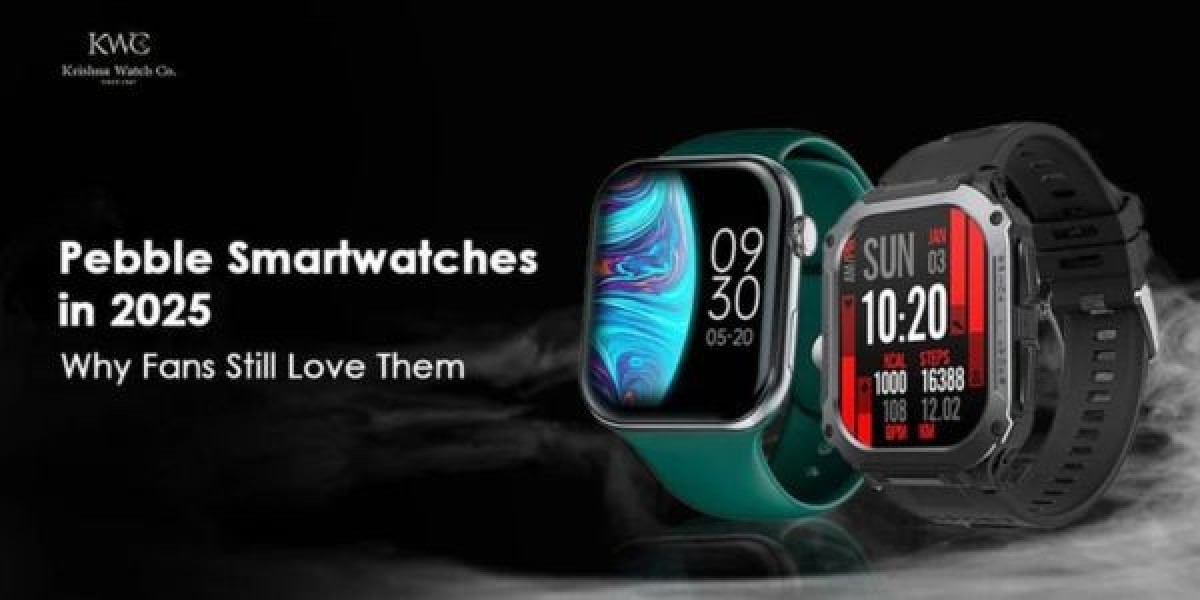In the fast-paced world of wearable technology, where smartwatches have become miniaturized computers on our wrists, there’s one name that continues to resonate with a unique kind of nostalgia and admiration: Pebble. Despite being discontinued years ago and overshadowed by giants like Apple, Samsung, and Garmin, Pebble smartwatches still command a cult-like following in 2025. The story of why fans remain so devoted to these little e-paper timepieces is not only about technology—it’s also about community, philosophy, and a celebration of minimalism in an age of overload.
A Brief History of Pebble
Pebble began as one of the most successful Kickstarter campaigns of all time, raising over $10 million in 2012 for its first e-paper smartwatch. At a time when smartwatches were still niche gadgets, Pebble offered something truly revolutionary: a wrist-worn device that paired with smartphones, displayed notifications, tracked fitness, and ran third-party apps—all while lasting nearly a week on a single charge.
The e-paper display was a standout feature. It wasn’t flashy or colorful, but it was easy to read in sunlight and consumed very little power. The interface was intentionally simple, focusing on function over form. Pebble found its audience among early adopters, tinkerers, and those who wanted smart features without the baggage of complexity.
Though later acquired by Fitbit in 2016, the brand officially came to an end when Fitbit shut down Pebble services. For most devices, this would have been the death knell. For Pebble, however, it was only the beginning of a new chapter fueled entirely by its fan base.
Why Pebble Still Thrives in 2025
1. Unmatched Battery Life
In 2025, most smartwatches boast advanced OLED or microLED displays, health sensors, and AI-powered assistants. But one thing they struggle to deliver is multi-day battery life. Even with power-saving modes, mainstream devices typically require daily charging. Pebble users, on the other hand, continue to enjoy up to seven days of usage on a single charge.
This reliability is more than a convenience—it’s a way of life. Many Pebble fans cite “battery anxiety” as one of the biggest frustrations with modern wearables, and Pebble neatly avoids this problem with its efficient e-paper design.
2. Simplicity Over Complexity
While competitors chase cutting-edge features, Pebble embraced minimalism. Notifications, alarms, basic fitness tracking, music control, and a vast library of watchfaces remain sufficient for many users. Fans argue that Pebble delivers exactly what they need and nothing more.
In an era where AI-driven assistants bombard users with recommendations and constant updates, Pebble offers a kind of digital peace. It feels more like a companion than an overlord.
3. The Power of Community
One of Pebble’s greatest strengths has been its fan base. When official support ended, developers and enthusiasts stepped in to keep the ecosystem alive. Projects like Rebble, a community-driven effort to replace Pebble’s cloud services, ensured that users could still access apps, weather updates, and firmware updates long after Fitbit abandoned the platform.
This grassroots movement has kept Pebble alive through sheer passion. Forums, Reddit threads, and open-source projects still buzz with activity in 2025, demonstrating that a dedicated community can outlast corporate timelines.
4. Customization and Personality
Pebble watches support thousands of custom watchfaces and apps. Whether users want a minimalist digital clock, a retro video game-inspired design, or a quirky animation, Pebble’s library provides endless personalization.
This contrasts with the limited customization options on many modern devices. For fans, Pebble is not just a smartwatch—it’s a canvas of self-expression.
5. Durability and Longevity
Pebble watches were built to last. Many of the original models from 2013 are still ticking in 2025, with replaceable straps and resilient hardware. Modern smartwatches, while packed with sensors, often require costly replacements every few years due to battery degradation or software obsolescence. Pebble’s simple design makes it repairable and sustainable, which resonates in today’s eco-conscious world.
6. Affordable Entry Point
For new users, Pebble represents an affordable gateway into smartwatches. While top-tier devices often cost hundreds of dollars, used Pebbles are relatively inexpensive and provide essential features without overwhelming budgets. This affordability keeps them appealing, especially for students, hobbyists, and those who simply don’t want to spend heavily on wearables.
Pebble in the Modern Context
In 2025, the wearable market is saturated with powerful options. Apple’s ecosystem ties its watch seamlessly to iPhones, Samsung pushes health innovation, Garmin dominates the fitness segment, and newer entrants experiment with flexible displays and AI integration.
Yet Pebble remains different precisely because it doesn’t compete directly. It’s not about biometrics, ECG readings, or AI-driven coaching. Instead, it’s about balance—a smartwatch that enhances daily life without intruding too much into it.
Some fans even pair Pebbles with modern phones purely for notifications and basic tasks, while relying on dedicated fitness trackers or health devices for specialized needs. This modular approach allows Pebble to remain relevant alongside far more advanced gadgets.
The Cultural Impact
Pebble isn’t just a watch; it’s a symbol of a different philosophy in tech. It reminds us of an era when devices didn’t need to do everything, and when user empowerment came through openness and simplicity. For many, wearing a Pebble is a subtle statement against the hyper-commercialization of wearables.
Collectors have even begun treating Pebble models as artifacts. Rare editions, like the Pebble Steel or Pebble Time Round, are prized for their design and uniqueness. This collector culture ensures that Pebble’s legacy endures in ways beyond practical usage.
Interestingly, some niche companies, such as Krishna Watch Company, have studied Pebble’s enduring appeal when designing hybrid smartwatches. By blending timeless design with limited but essential smart features, these firms highlight how Pebble’s philosophy still influences the industry even after its official demise.
The Future of Pebble Fans
So, what does the future hold for Pebble enthusiasts? While hardware inevitably ages, the resilience of the community ensures ongoing support. Battery replacement guides, refurbished units, and open-source firmware all extend the lifespan of these beloved devices.
It’s unlikely that Pebble will ever return in an official capacity, but its DNA lives on in other projects. Minimalist wearables, e-paper gadgets, and community-led tech efforts all carry forward Pebble’s spirit.
Ultimately, Pebble’s staying power is a testament to the idea that technology doesn’t always need to be the biggest or flashiest to be meaningful. Sometimes, what people truly want is reliability, simplicity, and a connection to a community that shares their values.
Conclusion
In 2025, Pebble smartwatches are more than just relics of early wearable tech—they are living reminders of how thoughtful design and community-driven support can outlast corporate strategies. Fans love Pebble not because it competes with modern devices, but because it stands apart from them. It represents an alternative vision of technology: one that prioritizes simplicity, battery life, customization, and durability.
As long as there are users who value these qualities, Pebble will never truly fade away. Instead, it will continue to inspire, reminding the world that sometimes less really is more.













